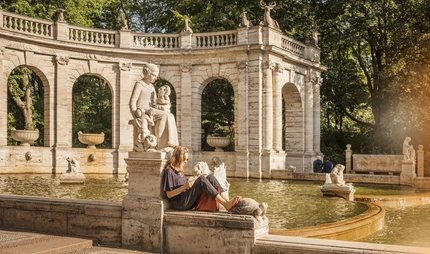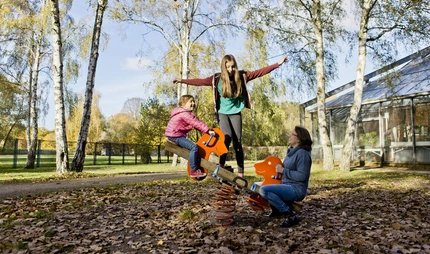
Volkspark Hasenheide (Hasenheide park)
A piece of Berlin history
Once a rabbit warren, later the hunting ground of the Great Elector and finally the place where "gymnastics father Jahn" invented sport: Volkspark Hasenheide is historical ground.
A monument at the northern entrance of the park commemorates him:
Friedrich Ludwig Jahn - also called "Turnvater Jahn" - is a well-known educator and member of the Frankfurt National Assembly at the beginning of the 19th century.
Push-ups for the Fatherland
Jahn initiates the German gymnastics movement. From the beginning, the gymnastics movement is linked to the early national movement in Germany. During the Napoleonic occupation, Jahn founded the first gymnastics centre in Berlin's Hasenheide in 1811, where young people were to be prepared for the fight against France and for the salvation of Prussia and Germany. Jahn puts gymnastics at the service of patriotic education in Prussia. In 1817, the gymnastics movement reaches a peak after the wars of liberation - there are now over 100 gymnastics courts in Prussia. On the Hasenheide square alone, over 1,000 gymnasts gather in 1817. In 1848, gymnastics father Jahn becomes a member of the German National Assembly in Frankfurt/Main.
More history. From the hare enclosure to the mountain of rubble
The name of the park goes back to its use as a rabbit warren from 1678. The Great Elector went hunting here. The park was converted by the National Socialists for the 1936 Olympic Games. During the conversion, the old shooting range, which had previously been part of the Tempelhofer Feld parade ground, was integrated into the park. Today, the Neukölln May Days take place there. The highest elevation is a 69-metre-high mountain of rubble called Rixdorfer Höhe, consisting of about 700,000 cubic metres of World War II rubble. The Monument to the Rubble Women by Katharina Szelinski-Singer from 1955 at the entrance to Graefestraße commemorates the clean-up work, most of which was done by women.



